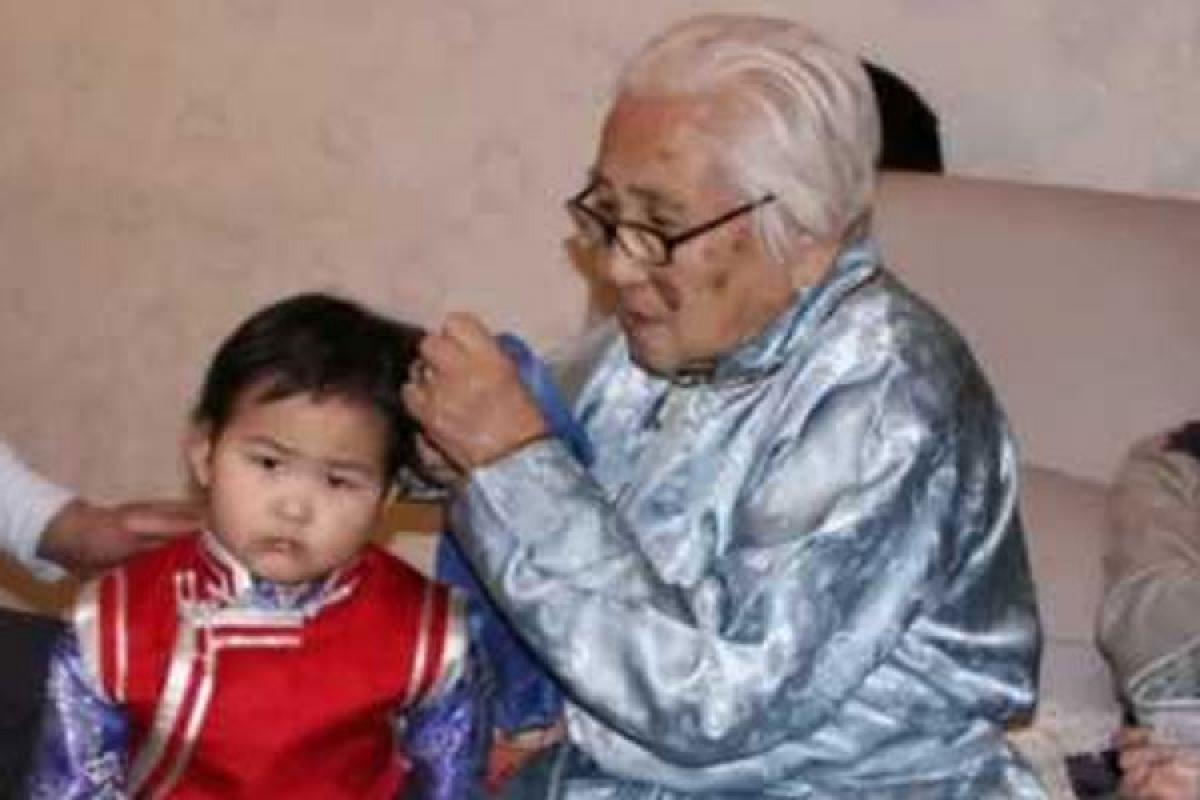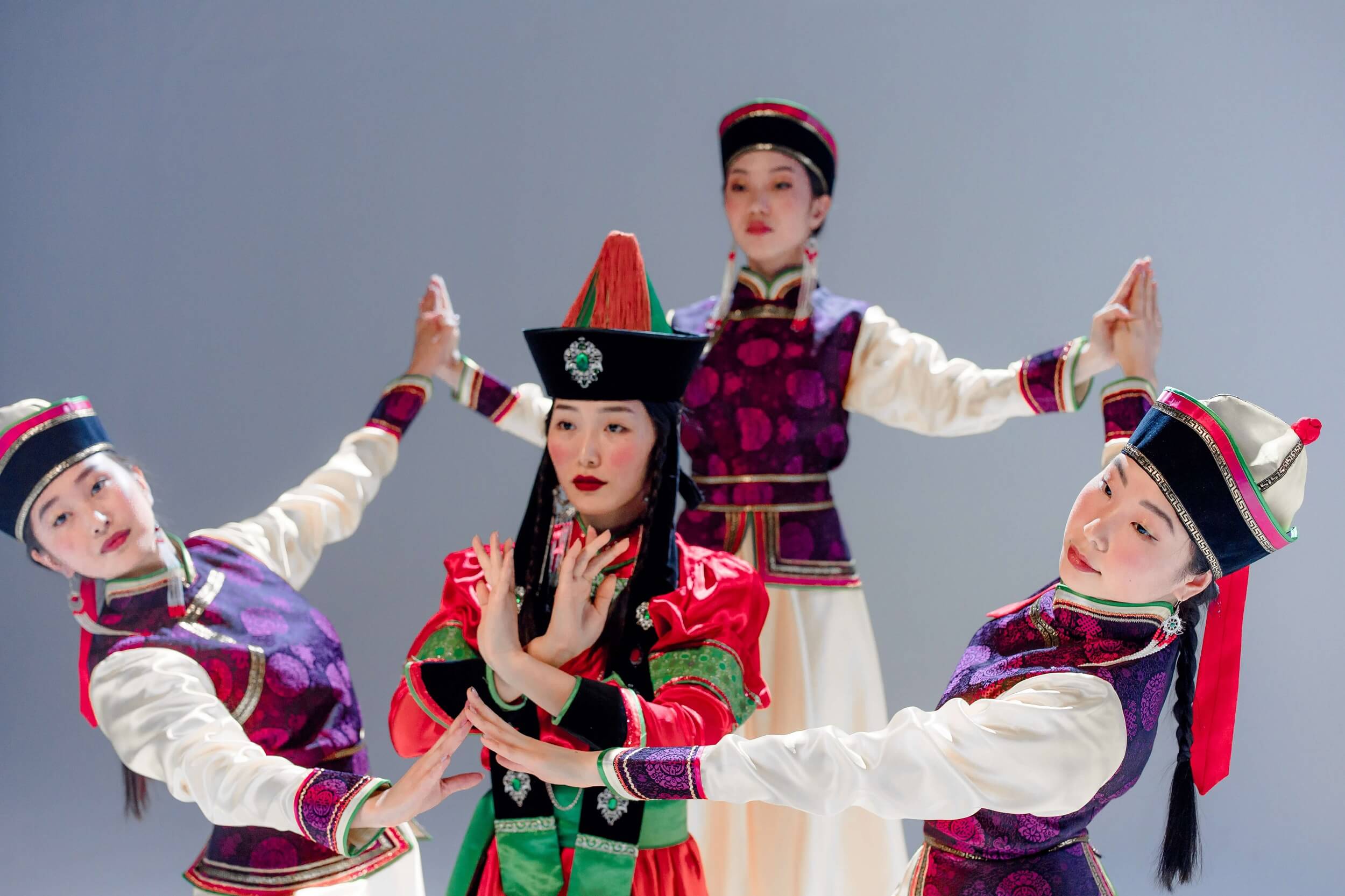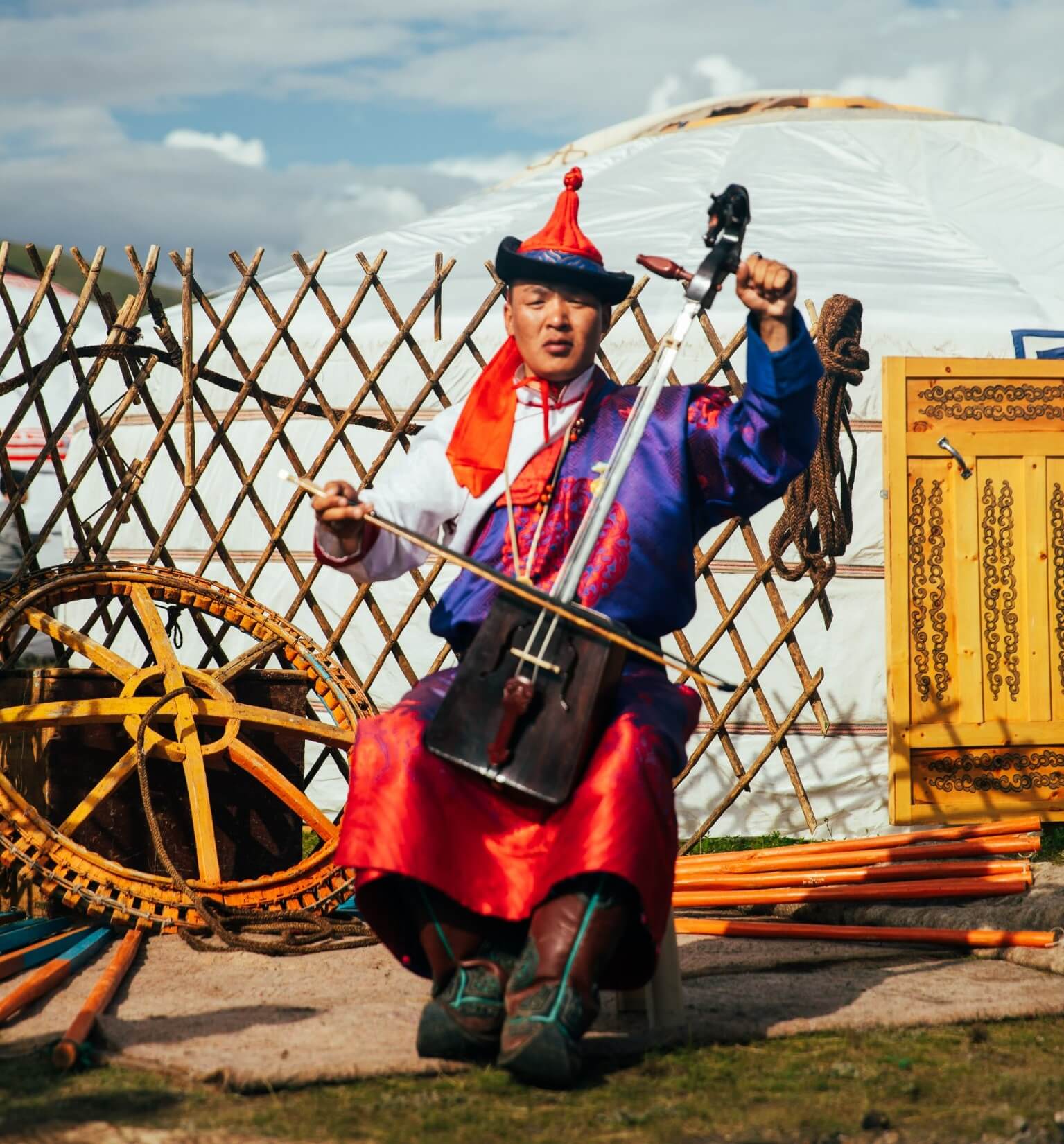Mongolian Haircutting Ceremony
Mongolian haircutting ceremony – Since ancient times, Mongolians have had a tradition of rubbing the skin of their young children, and they still keep this tradition. Male children are plucked at odd and female children are plucked at even ages.

The first haircut ceremony for children, known as khüükhdiin üs avakh (cutting the child’s hair) or örövlög ürgeekh (clipping the child’s crest) in Mongolia, is a widely celebrated event with uniform practices.
This tradition is observed when boys reach the ages of 3 or 5 and girls at 2 or 4, aligning with the Mongolian belief in the auspiciousness of odd and even numbers, termed arga (method) and bilig (wisdom), respectively.

The ceremony is conducted much like other Mongolian festive occasions, featuring an array of traditional dishes and beverages, including tsagaalga (dairy products) and meat. Every attendee enjoys a sampling of tsagaalga, and each child receives a full cup of these dairy products.
Also, it is important to prepare food, especially white raisin curd and white rice with milk, when taking a child’s hair. All the guests gather together and start the feast by tasting white rice.
During the cutting of the child’s hair, every guest gives a present to the child, giving well-wishing words, such as:
Live long
Be happy
Be kind to your father
Be helpful to your mother
Be meritorious for your country
Be the foremost citizen among the people
Reasons for removing baby hair:
It was believed that if the baby’s hair is not removed, the child will become angry and mentally retarded. In some places, it is customary to leave the horn as a symbol of affection, while in others, it is considered a matter of choice.

The horn (small hair on the back of the head) should be:
It is customary to use horns to drive away natives. Just as customs vary from place to place, so do the meanings of horns.
Children’s horns are called differently from place to place. A horn is a fingertip length of natural hair left untouched on either side of the top of a child’s head.
In the western provinces of Mongolia, it is called sugusu, and when three fingers of hair are left on the forehead of a male child, it is called sugusu. The reason for leaving hair like this is explained as follows.
The ceremony of removing the child’s hair
If the person who is supposed to be there or not present when the child’s hair is taken, hair (horns) are left waiting for them.
Enhrii (daughter) was only able to touch the child’s head at the age of 7 or 9. At what age will the family receive the allowance for the eldest child? There is still a custom of taking responsibility for the next child at that age.
Choose the best month and day for the child. On this day, the child’s brothers, relatives and respectable people are invited, as well as the person who has the child’s auspicious year to remove the freckles.
But in some areas, children were not taken on the fourth day. This is because this day is considered to be a day of human endowment.
On ceremony
In the morning or before noon of the chosen auspicious day, gather your brothers, sisters and friends, prepare a table, offer food and drink, dress your son beautifully and sit at the head of the table to perform the ceremony.
Clean the scissors with juniper and frankincense before touching the child’s hair. To the right of the house sits a person who is the guardian of the child. This person becomes the most respected person in this family.
The child’s father, grandfather or the leader of the feast says, “Now let’s take care of my son.”
The boy gets up. In some areas, the grandfather or the father, in other areas, the child’s patronymic person first touches the dahi and pretends to shave hair with a wooden knife, starting from the right side of the head.
Then, with a pair of scissors tied to the handle, cut a piece of hair from the forehead and tie it to the hair. Then give the child a taste of a glass of milk and pray, “May you live long and be happy”

After that, when the child is paraded around in front of parents, elders, and guests, everyone takes it from the hair, puts it in a hairpin, and keeps it.
Give gifts to children. A bald white sheep or a lamb was promised to the child. Nowadays, toys, pencils, stationery, hairbands, badges, sweets and money are given.
Mongolians forbade leaving the hair in the tail open and twisting it because it would shorten the life and end the good fortune.




















